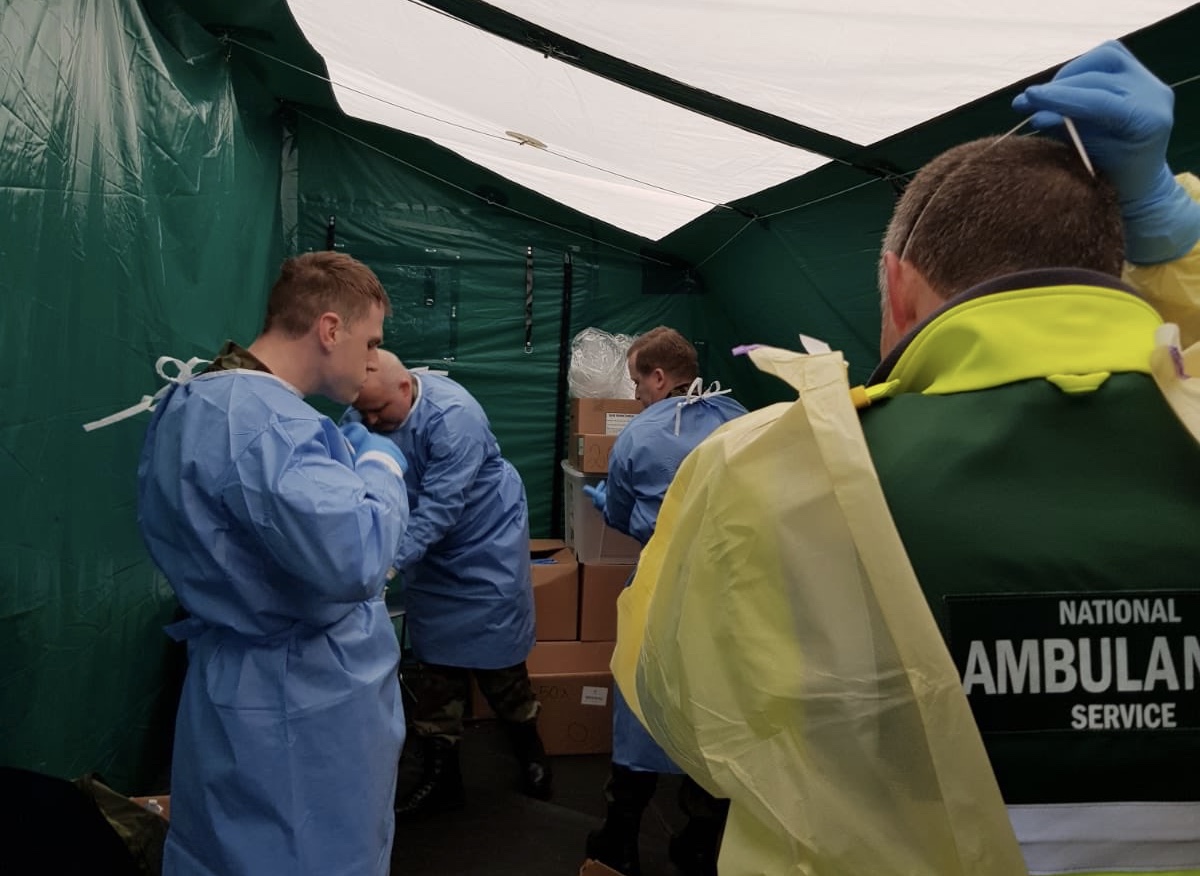A certain eerie calm had descended on the area between the IFSC and our so-called Silicon Docks. Hanover Quay normally hums with phone calls, overpriced croissants and business suits. On this day, it stood nearly devoid of life, the silence pierced only by the trill of a distant Luas or the odd cry of a lone seagull. It was for this very reason, along with its central location, that Hanover Quay was chosen to host a Covid-19 testing centre.
I found out I was to be tested for Covid-19 a week after coming back from the Trinity Surf Club trip to Fuerteventura. A student on the trip had tested positive, and we were informed we would be contacted by Public Health Tracing in the following days. Sure enough, a day later I received a telephone call from a friendly young soldier stationed at the Curragh. He was working with Public Health Tracing, and booked me in to get tested for Covid when I told him I had a mild sore throat.
Due to delays in testing, and my low-risk status, it was two weeks before I was contacted to be tested. On arriving at the testing centre in Hanover Quay, I was met by a soldier who handed me a surgical mask, and pointed me through to the entrance of the long military tent tunnel in which the testing took place. The tunnel was strictly one-way, to avoid those being tested from crossing paths. After fitting my surgical mask and thoroughly sanitising my hands, I was directed to sit in a chair so my contact details could be taken. Despite the great lengths that were evidently being taken to sanitise and clean all surfaces, it was slightly nerve-wracking to sit in the knowledge that the Covid-19 virus could well be all around me, including on the seat in which I was sitting.
Once my details were taken I was sent further down the tent, where a medic invited me to confirm my details once again. I was then handed a tissue and asked to blow my nose. The swab test itself then took about five seconds. Down the throat and up the nose. Pleasant? No. Bearable? Certainly. Keeping in mind that the staff are working 12 hours a day, testing someone every 15 minutes, I felt obliged to mumble a sheepish apology for squirming as the swab made its way up my nose.
Five seconds and it was over, and the medics went back to their endless routine of sanitising the testing area and disposing of their gloves. I was directed to the end of the tunnel, where I was handed a home-kit. Included in it were two surgical masks, two thick bin bags, and a pamphlet outlining what I should do while waiting on my test results.
Despite the heavy workload and potentially dangerous environment, all the staff throughout the process were friendly and courteous. But no one was chatting or joking. Everyone was alert, and clearly very aware of the gravity of the situation. Soldiers and medics walked and talked quickly, they worked efficiently. There was no escaping the dystopian vibe that hung over the whole process, from the military garb to the visors and surgical masks.
In the unlikely event I test positive, I’m likely to fully recover with minimal, if any, symptoms. But brushing against the coalface of our fight against Covid 19 was scary.
Having said this, there is also a cause for optimism from the experience of being tested. I was astounded by the level of professionalism and dedication to duty shown by the soldiers and the health workers. While I felt nervous sitting in the testing centre for five minutes, those staffing the centre were voluntarily exposing themselves to the virus for weeks on end. In the context of one in four infections being healthcare workers, that’s a remarkable personal sacrifice to protect the health of others. A few weeks of Netflix doesn’t seem as gruelling now.






